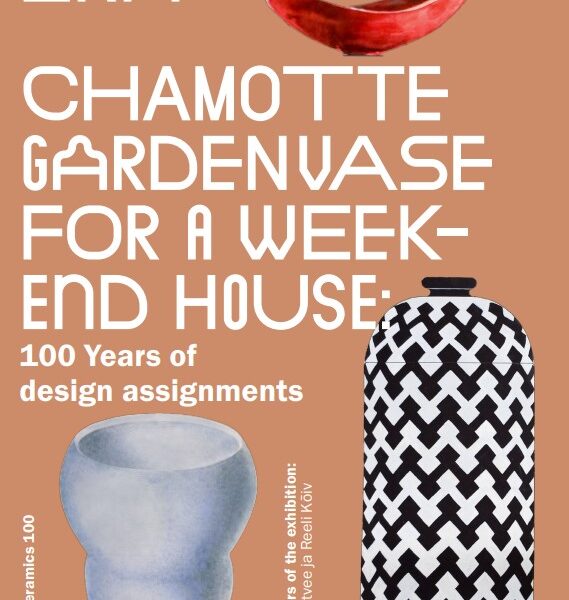
Exhibition of the Ceramics Department and Museum of the Estonian Academy of Arts.
The main material in ceramics, clay, has formed over the course of millions of years, and the oldest clay artefacts date back thousands of years. In comparison, the one
hundred year history of the Ceramics Department at the Estonian Academy of Arts
(EKA) is merely the blink of an eye. Our professional ceramics training, which began
in 1923 at the State School of Arts and Crafts, EKA’s predecessor, is almost as old
as the Republic of Estonia. The discipline, which was narrowly classified as applied
art in the past, has undergone a significant transformation over this period of time
and has now assumed its place on a much broader scale of arts.
The commemorative ceramics exhibition has been compiled from student works
stored in the Methodological Fund of the Ceramics Department, now the EKA
Museum. Some works at the exhibition have also been borrowed from the artists.
Despite certain gaps in the collection, the exhibition still provides a comprehensive
overview of the history of ceramics throughout the century. We can see the
influences of the first head of department, Hungarian Geza Jako, as well as national
self-searching, inspirations from different art styles of the era and the blurring of
boundaries between applied and liberal arts. The ceramics collection is not deemed
final, as it is constantly being supplemented with older works as well as new student
projects, both at the initiative of the museum and the department.
The title of the exhibition, Chamotte garden vase for a weekend house, comes from
the name of a design assignment from the 1960s, of which only a draft is displayed in
the exhibition. Although the ceramics department has also designed large-scale
items over the years from fireplaces and fountains to panels, only a few of them were
realised and they are not on show in this exhibition. Instead, a selection of designs is
exhibited, many of which act as independent works of art. Several of them are also
paired with physical objects in showcases. The ceramic works are divided into five
major subcategories at the exhibition, offering one possible perspective: vessels,
figures, vases, sets and plays with form, which tell their own story and enter into a
dialogue with their neighbours. The booklet accompanying the exhibition will also
include a more in-depth introduction of the selected works by the artists or curators.
